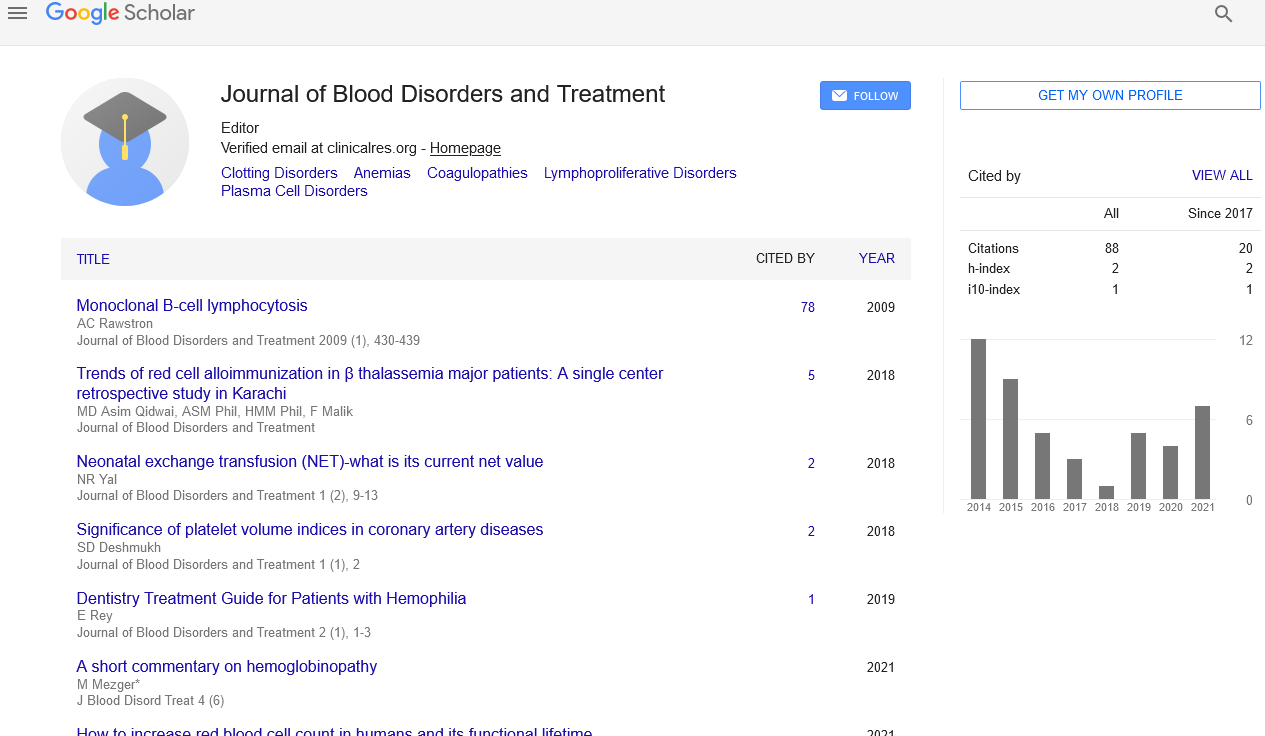Structure and function of hemoglobin in Homosapiens
Andhra University
, India, Email: venkataramanavennapu70@gmail.comReceived: 08-Jul-2020 Accepted Date: Jul 23, 2020; Published: 30-Jul-2020
This open-access article is distributed under the terms of the Creative Commons Attribution Non-Commercial License (CC BY-NC) (http://creativecommons.org/licenses/by-nc/4.0/), which permits reuse, distribution and reproduction of the article, provided that the original work is properly cited and the reuse is restricted to noncommercial purposes. For commercial reuse, contact reprints@pulsus.com
Introduction
Haemoglobin is a red blood pigment formed in erythrocytes. The Normal concentration haemoglobin in blood in males is 14-16 g/dl and females 13-15 g/dl.Structure of haemoglobin
Haemoglobin is a conjugated protein containing goblin and heme. Globin is apoprotein and heme is a non protein part.
Globin consists of 4 polypeptide chains of two different primary structures. The common form of adult’s haemoglobin is made up of 2α and 2β chains. Each α chain contains 141 amino acids while β- chain contains 146 amino acids. So total 574 amino acid residues. The sub units of haemoglobin are held together by non- covalent interaction primary hydrophobic ionic and hydrogen bonds. Each subunit contains heme group.
The characteristic of red colour is due to heme. Heme consist of porphyring molecule namely protoporphyrin-9 which ion in its centre. Protoporphyrin-9 consists of 4 pyrol rings to which 4-methyl, 2 propanol and 2- vinyl groups are attached. The iron atom is in ferrous state in the heme of functional haemoglobin. Iron is helded at the centre of heme by 4- nitrogen of porphyrin. On one other side Fe2+ bind to oxygen. This happen when Hb is converted to Oxyhemoglbin.
Hb is largly responsible for transport of oxygen from lungs to tissues. It also helps to transport carbon dioxide from the tissues to the lungs. In the lungs where the concentration of oxygen is high, the Hb gets fully saturated with oxygen. Conversaly at the tissues level where oxygen concentration is low the oxyhemoglobin is release its oxygen for cellular respiration. This is often mediated by binding of oxygen to myglobin with serves as immediate reservoir and supply of oxygen to tissues.
Transport of Carbon dioxide to lungs
In aerobic metabolism for every molecule of oxygen utilizes one molecule of carbon dioxide is liberated. Hb actively participates in the transport of carbon dioxide from tissue to lungs. About 15% of carbon dioxide carried in blood directly binds with Hb. The rest of carbon dioxide is transported as bicarbonates. Carbon dioxide molecules are bound to the uncharged α amino acid of Hb to form carbonyl Hb. Hb helps in the transport of carbon dioxide as bicarbonate. As the carbon dioxide enters the blood from tissues the enzyme the formation of carbonic acid. Bi carbonate and protons are erythrocytes catalyses the carbonic acid. Hb acts as buffer and immediately binds with protons. It is estimated that for every 2 protons binds to Hb 4- oxygen molecule are released to the tissue. In the lungs binding carbon dioxide to Hb results in the release of protons. The bi- carbonate and proton combined to form carbonic acid. Latter this is acted upon by carbonic anhydrous to release carbon dioxide which is exhaled. The final result is a α-thalassemia phenotype rather than an unstable haemoglobin syndrome. This conclusion is supported by the apparent absence of an abnormal α chain in the peripheral blood of the patient non-spherocytic hemolytic anemia.





